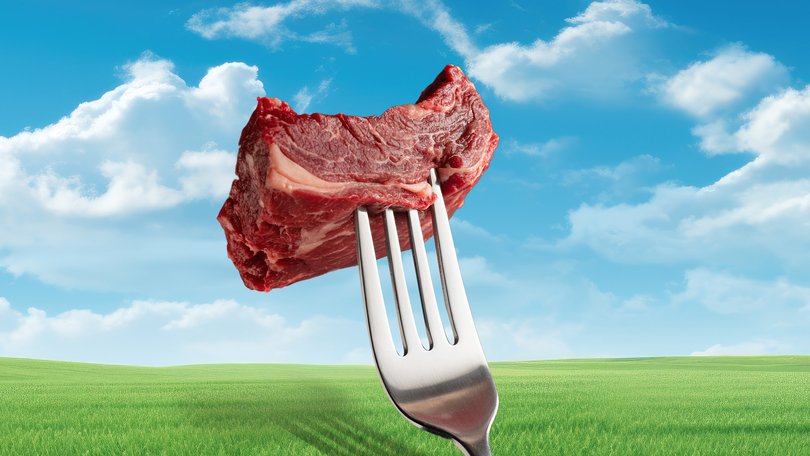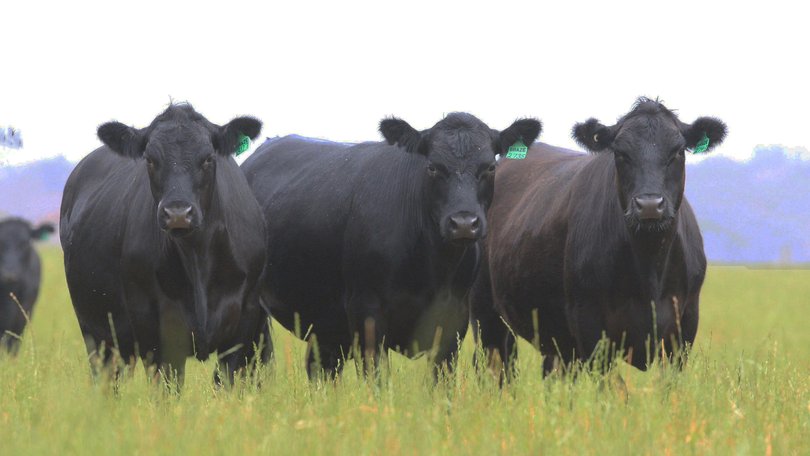‘Reality Check’ as beef industry drops net-zero goal to go carbon-neutral by 2030

Meat & Livestock Australia has officially dropped its headline target of reaching carbon-neutral emissions by 2030, shifting instead to a broader commitment to “contributing to Australia’s net zero ambitions” — effectively aligning with the Federal Government’s 2050 goal.
Following the release of the MLA’s new 2030 Strategic Plan, managing director Michael Crowley said the carbon-neutral goal, first adopted in 2017, had driven over $100 million in sustainability investment but was no longer feasible under current conditions.
“Reaching CN30 was dependent on the right levels of investment and policy settings,” Mr Crowley said.
Sign up to The Nightly's newsletters.
Get the first look at the digital newspaper, curated daily stories and breaking headlines delivered to your inbox.
By continuing you agree to our Terms and Privacy Policy.“We now know we need more time, more support, and more investment to reach our goal.”
The industry’s revised position follows a midterm review of the Red Meat 2030 strategy, led by the Red Meat Advisory Council, and was welcomed by some producers as a reality check.
Adam Coffey, a Northern Territory cattle farmer and deputy chair of Cattle Australia, said the shift reflected what many in the grass-fed cattle industry had been arguing for behind the scenes.
“We do see it as a win. It’s a bit of a reset around emissions policy for red meat,” Mr Coffey said.
Mr Coffey said the sector had been forced to contend with flawed greenhouse gas accounting standards that overstated livestock emissions.
“There’s wide acknowledgement now, as high up as the IPCC, that greenhouse gas accounting methodologies trying to bring everything back to a carbon dioxide equivalent have some issues. And those issues are very simple and quite important for the livestock sector because it means our emissions have been grossly overstated.”

He said the 2030 goal risked becoming “the epitome of brainwashing” and could set a precedent that flowed down through the supply chain, increasing costs and confusion.
Yet others in the sector warned against interpreting the change as backsliding on sustainability. Bobby Miller, founder of emissions tracking platform Ruminati, said the 2030 target had been set with limited information, and that revisiting it was “smart”.
“It was an ambitious target that was set in a knowledge vacuum. As information comes in, it’s smart to reassess the headline target,” Mr Miller said.
The target was introduced at the height of concerns about emissions from livestock, with the industry concerned it would face the existential threat of customers switching to other proteins.
The industry also faced the introduction of so-called Scope 3 emissions reporting that required corporations such as banks and supermarkets to track the emissions of those in their supply chain. That reporting became mandatory on January this year.
One of the challenges behind widespread adoption by farmers had been the lack of a premium paid for lower-emission meat, prompting many to question why they should adopt different farming techniques without being compensated for it.
Mr Miller said many farmers who have adopted strategies to minimise emissions were still seeing benefits beyond reduced methane, such as increased productivity, but it appeared the option to attract a premium was unlikely to eventuate.
“It’s going to be baked into the expectation rather than rewarded in the premium. Our Wagyu customers are getting asked about it more and more. There’s a notion from customers that if I’m paying $40 a kilo for meat, you’re doing something about the environment,” he said.
While many corporations had begun backing away from promoting their ESG (environmental, social, governance) credentials due to a backlash in the United States, Mr Miller said the pendulum was likely to swing back in the other direction.
“Just as quickly as this gets dropped off, it could come back again,” he said.
The new strategy comes after a record-breaking year for Australian red meat exports, with more than $20 billion of product exported.
The US, which is experiencing the smallest cattle herd in 75 years due to drought, has become Australia’s number one customer. Beef has soared to record highs, with customers showing no signs of reducing consumption.
The MLA has not given up its commitment to the environment, with Mr Crowley vowing to “keep pushing forward to reach our sustainability goals. It’s what our producers, our community and our customers demand.”
To achieve that, the MLA has committed to investing over $24 million in environmental projects, including methane-reducing feed additives, carbon soil measurement technologies, and biogenic methane research.
“Productivity-led sustainability will ensure we can grow the herd and flock whilst delivering positive environmental outcomes,” Mr Crowley said.

